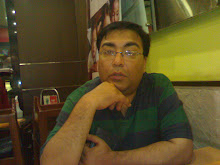 Information technology is meant to enhance the quality of service and experiences delivered in a hospital. Once a patient is registered in the hospital, the subsequent visits can than be recorded and the visit log used for either customising the services or improving the experiences. It also helps the hospital maintain patient records, which can be pulled out at the push of a button. These can help the medical teams see a fairly complete patient history and allow correct diagnosis.
Information technology is meant to enhance the quality of service and experiences delivered in a hospital. Once a patient is registered in the hospital, the subsequent visits can than be recorded and the visit log used for either customising the services or improving the experiences. It also helps the hospital maintain patient records, which can be pulled out at the push of a button. These can help the medical teams see a fairly complete patient history and allow correct diagnosis.
More intelligent systems are now deployed at state of the art hospitals, which even provide aid to physicians in diagnosing and treating a patient's condition. They also ask a question and alert the doctor if they spot an anomoly. For example if a drug prescribed to be administered is contra indicated or if it has been given by another doctor on duty two hours ago, the system can raise an alert and inform the doctor. These systems are great to have.
The only hitch with all this is that HIS systems being used by most hospitals in India deliver far less than what they promise. I have been part of various tech committees set up to evaluate these products and oversee their implementation and I must say that there exists a big gap between what is promised, what is delivered and ironically what ends up being used.
Here is what goes wrong.
The HI systems are just unable to cope with the OPD volumes of a busy hospital. In India patients do not show up a few minutes before their appointed hour. They usually come late and expect instant service. Quite often the doctors also come in late and invariably the HI system is under constant pressure to push the patients through. The queuing system is mostly non existant. In some hospitals nurses double up as patient care executives with little knowledge of how to tackle the HIS. Patients start venting their ire on the hapless nurses and everything breaks into utter chaos.
The doctors are still quite at sea with the computers and myriad HIS screens. Can one really blame them? In medical colleges I am not sure if they have an elementary course in managing a computer. They also train mostly in government run busy hospitals, where they have to see 100 or more patients in an hour. Now to connect with a computer is difficult for them and in the opinion of many, an unnecessary ordeal. The patients always bring their files and the doctor if necessary can scan their history from those files.
The billing systems are unable to cope with the multiple billing requirements and rules that need to be followed. The billing is thus rarely accurate and lot to be billed is left out. The hospitals take a hit and in meetings after meetings these points are highlighted, audit committees get to have a field day and the head of operations and the head of IT a great fight.
The clinical systems are even a worse nightmare. The nurses who are supposed to use them are completely ill equipped to handle them. They have been trained all their lives to use neatly filed multi coloured charts to monitor the condition of a patient. To force them to use laptops and state of the art HIS is pretty much like asking me to try my hand at surgery. This is just not going to work till we have nurses far more educated and better trained than what we have now. Rushing them through a typical two weeks or less training programs and expect them to master all this is unfair.
The surgeons are far more comfortable in the OR rather than in front of a computer screen filling in post operative notes or dictating in a Dictaphone, which will be transcribed by a guy whose knowledge of medicine will fit on a postage stamp.
The HI system is also touted as a great management tool as it can spew out all manner of reports. The HIS sales team merrily demonstrates the system's capabilities by generating sample reports during their sales presentations. The managers usually fall for this. Once the system is implemented the reports become the first casualty. The system usually produces raw data, which is than manually analysed and reported. What fun!
This piece is not meant to deride the HIS systems per se. On the contrary it is a lament on how the systems are used in modern hospitals in India. The way forward can not happen without HIS smoothly running the hospitals of the future. However, to reach there we need better and more Indianised Hospital Information systems, tightly defined hospital processes, and IT savvy doctors and nurses and a bottoms up approach.
The image is from www.flickr.com


